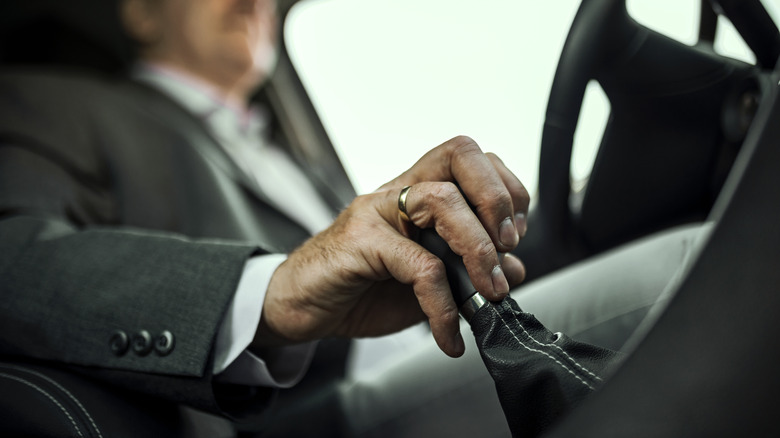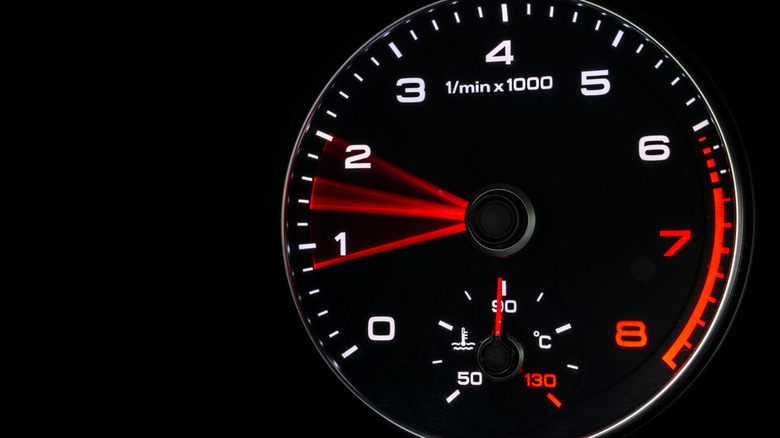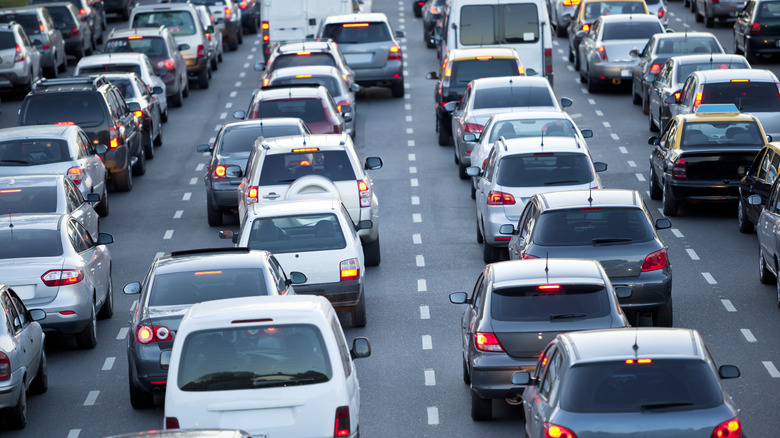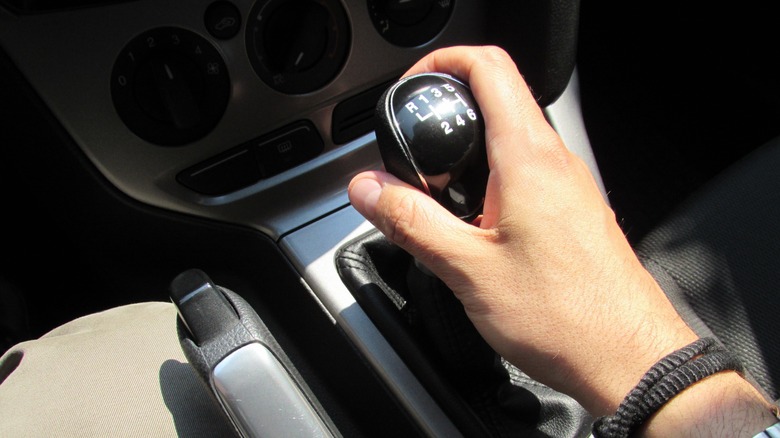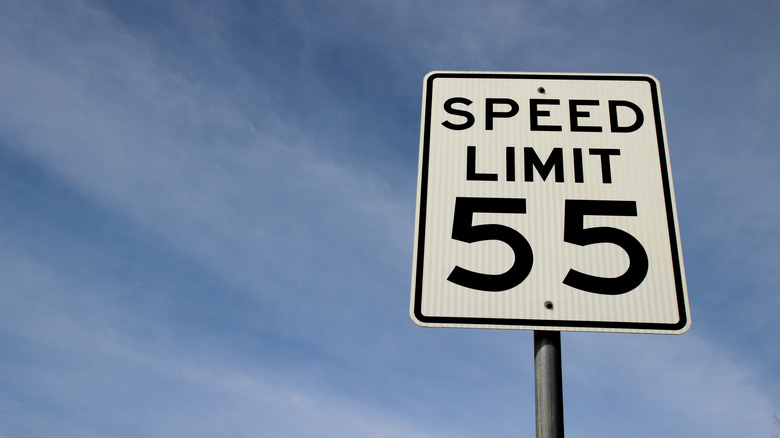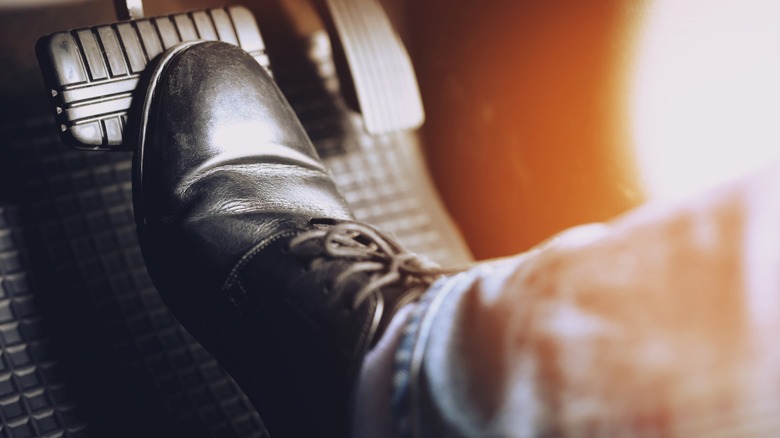5 Manual Transmission Tips That Could Improve Your Vehicle's MPG
One of the main benefits of driving a vehicle with a manual transmission is increased fuel economy. But how exactly does a manual gearbox make your car more efficient? Some of the factors involved are pretty passive. Manual gearboxes weigh less, so your vehicle has less mass to move around, for example. Sending power through a manual gearbox is also easier on the engine itself. These factors won't change no matter what the vehicle's driver does.
But driving stick is a constant learning curve. Even if you've mastered clutch control and are shifting gear at an optimal time, there are still bad habits to unlearn, and good habits to pick up. Economical driving is a great area to study if you want to increase your skillset and save some cash. There are many ways a manual gearbox can make a gas tank go further — but some of them require a little effort from the person behind the wheel.
If you know how to drive economically, then a manual gearbox can achieve far greater fuel efficiency than its automatic equivalent. However, certain driving styles can have the opposite effect and turn your economical manual into an absolute gas guzzler. It is worth pointing out that modern automatic gearboxes are a lot better and more fuel-efficient than older models, so there is a more noticeable gap in efficiency with vintage vehicles. But if you drive a car with a manual transmission, these tips will help you regardless.
Keep the revs low, but not too low
As well as giving your engine an easier time, aiming for a low RPM can reduce friction within the engine. Things also get tougher at high RPM due to the increased friction your engine parts encounter. Engines are built to fine tolerances, so parts like your pistons will be rubbing against the walls of the engine's cylinder with each revolution. More revolutions mean more rubbing, which means more friction overall. Higher RPM also creates more heat, some of which is generated by friction but most of which comes from the fact there are thousands of violent explosions happening in the engine every minute. This heat can lead to more friction as it will make various components expand and reduce tolerances. The engine has to overcome this friction before sending energy to your vehicle's wheels — so lower friction means less energy has to be expended to move the vehicle along.
While keeping the revs as low as possible is generally good policy, there is such a thing as too low. If your RPM goes below 1,500, your engine will probably start to struggle. If it struggles too much, it's going to stall. You can put your foot down and power your way out of such a situation, but that isn't exactly economical. You can also press the clutch to take the strain off the engine and drop the vehicle into a lower gear — but it's best if you avoid the situation altogether. If you keep your engine's RPM between 1,500 and 3,000 as often as possible, you're going to see an increase in fuel economy. For most regular vehicles, 2000 RPM tends to be a sweet spot — though it does vary by engine and vehicle type.
Avoid heavy traffic
No matter what you're driving, heavy traffic can be a nightmare for fuel economy. Even modern cars with fuel-saving stop/start systems will still record a lower than usual efficiency ratings in heavy traffic. Initially setting off requires more energy than simply rolling along, so if you can avoid driving at rush hour you're in for an easier commute and a noticeable amount of fuel savings.
Still, traffic can cause you more problems in a manual vehicle. The most noticeable issue is constant shifting. Setting off in first is the most efficient way to start driving, but you'll have to shift to second pretty quickly. Then back to first when you stop, then second when you get rolling again. After several minutes of this, third gear feels like an achievement — though it might be a short-lived one as slowing down means dropping back to second, and stopping puts you right back in first gear.
As this tedious process starts to melt your brain, you may stop trying to pick the most economical gear for the situation. You'll also likely be using your brakes instead of letting your engine slow you down. Driving a manual economically takes a fair bit of concentration, which is difficult in heavy traffic. As an automatic negates the need for most of that concentration, there's a good chance people who swerve manual transmissions will record better fuel economy when navigating a traffic jam.
Higher gears are usually more efficient
In addition to managing your engine's RPM, you should also drive in as high a gear as you practically can. Gear selection and your ideal RPM range are closely linked. Higher gears allow the vehicle to move faster at a lower RPM. So while you can go quickly in a low gear, especially in a high-performance car, the engine will have to work very hard to get you to that speed.
When moving up the gears, you should shift as early as possible. When the throttle is open, your engine has a far easier time bringing in air. Shifting up efficiently keeps the RPM low, so you get the best of both worlds. The engine has access to plenty of oxygen so it can burn fuel efficiently, while not working too hard in terms of RPM. In most cars, you should think about shifting as your vehicle approaches 2,500 RPM. High-performance cars tend to operate better with a higher rev range, but you can still shift up smoothly with enough throttle.
Shifting up too early can put a strain on the engine, so make sure you take note of any feedback your car gives you. If it starts to struggle with every shift, then you'll need to up the RPM a little before you press the clutch and move up a gear. If you pay close attention, it doesn't take long to work out what your car likes to do and learn how to cycle through its gears in the most efficient manner.
There's still a speed limit
Whether you're in a manual car, an automatic, or even trying to maximize range in an EV, there's a speed range where your vehicle will be at its most efficient. Going slower than this will be less than optimal in terms of miles per gallon of fuel used, as will pushing beyond it. In most cars with internal combustion engines, this sweet spot sits at around 55 miles per hour. Conveniently, that's also the highway speed limit in several states. Driving at this speed constantly may be impractical for a number of reasons, but if you have the opportunity to just cruise along at 55, the gas in your tank is going to go that little bit further.
Oddly enough, the tests that the EPA conducts to measure miles per gallon on the highway involve an average speed of 50 mph and a top speed of 80 mph. While this is designed to simulate general highway driving, it's also less than optimal for most engines. So by sticking to the 55 mph limit, and ensuring your choice of gear allows the engine to sit around the 2,000 RPM mark, you may actually outperform the EPA's mileage estimates.
Avoid the brake pedal
Telling a driver to avoid using the brakes can have consequences, so let's start by saying if an elderly woman with a stroller walks out onto the road you should absolutely hit the brakes as quickly as possible. "I was trying to save fuel" isn't going to fly in court. But if you aren't approaching a potentially hazardous situation at high speed, some foresight can really save you a lot of fuel. Ideally, you'll use the brakes minimally while driving on long trips or in light traffic.
If you need to drop your speed, lifting your foot off the gas and letting the engine itself slow the vehicle down is far more economical than hitting the middle pedal. If you need to slow down more, drop a gear or two. This is known as engine braking and it uses far less fuel than hitting the brakes and subsequently speeding up again. It also uses less fuel than simply dropping the car in neutral, while giving you more control over the vehicle. In addition to the fuel-saving aspects, engine braking is also a safer way to slow down in adverse weather conditions or when going downhill. It saves a lot of wear on your vehicle's brakes too — so it's a great skill to learn.
